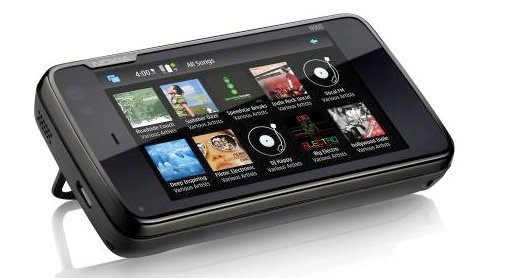Linux in your hand; from geeks only to consumer friendly mass market

My first experience with mobile Linux was with a Sharp Zaurus SL-5500 I bought back in 2003. It was very customizable with apps and functionality and you could change the ROM on it rather easily to fit your needs, but it also required you to spend hours and hours tweaking and refining it to get it to work just right. When I heard that we would see more Linux-based mobile operating systems I didn't think they would amount to much because consumers seem to want products that work even if they don't have the most powerful functions (as we see with the iPhone). I am pleased to now see that smartphone operating systems based on Linux look to be the most powerful, customizable, flexible, and consumer friendly of all platforms we see in the market. We are seeing some wonderful devices running the Palm WebOS, Google Android, and Nokia Maemo operating systems with the Palm Pre, HTC Hero, Verizon Droid, Nokia N900 , and many more.
Linux is not new to the mobile phone world, but in the past the majority of Linux-based phones were sold in China or were feature phones with "hidden" Linux builds, such as the Motorola RAZR2 V8, MotoZine ZN5, and Motorola ROKRs. Companies have taken the power of Linux and are bringing that to the mass market with these latest smartphones. These Linux-based operating systems are attractive to device makers because of the free or relatively inexpensive licensing agreements. We also see some of these high end Linux-based operating systems being quite open, primarily when looking at Google Android and Nokia Maemo 5 and 6. Palm's WebOS is primarily a closed system at this time.
Looking to the current lineup of leading smartphone operating systems we have the Apple iPhone based on Mac OSX, Nokia's Symbian lineup, RIM BlackBerry devices, Microsoft's Windows Mobile, and then a few Linux-based operating systems in Palm WebOS, Google Android, and Nokia Maemo. A couple of weeks ago I asked if Google Android was the upcoming smartphone of choice, but after spending a couple of weeks with the extremely powerful Nokia N900 (check out my Definitive Nokia N900 Guide for lots of coverage and details) I think all of these Linux-based mobile operating systems offer the most for consumers and are the best competitors to the highly successful Apple iPhone.
At this time, each of the devices mentioned in this article have more functionality and features than the iPhone and companies have made their interfaces almost just as fluid while being much more customizable and open. IMHO, the App Store is the only area where the iPhone currently reigns, but that may not be enough in the future and Apple will need to update the iPhone OS and hardware more than before with competition like this.
